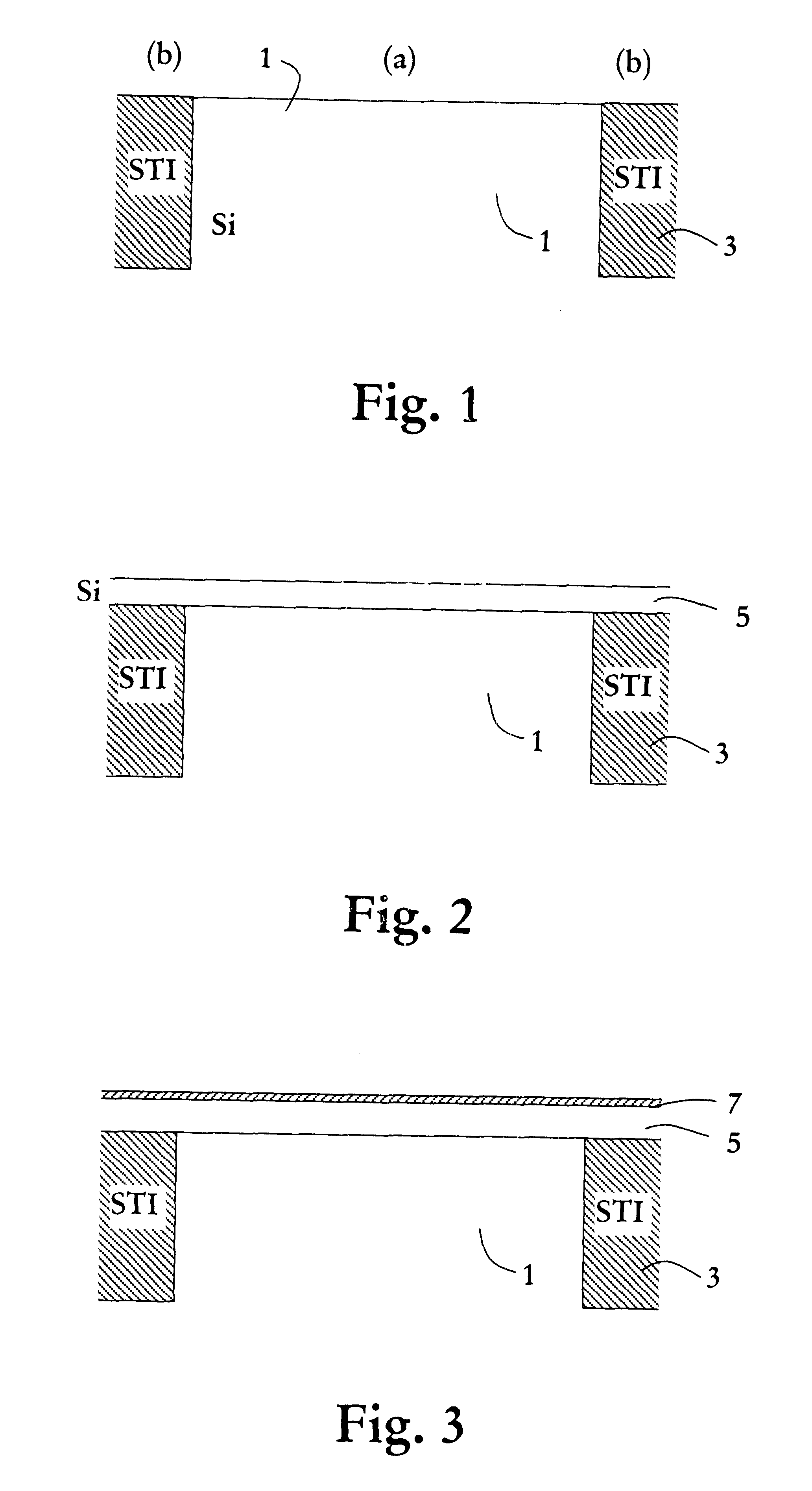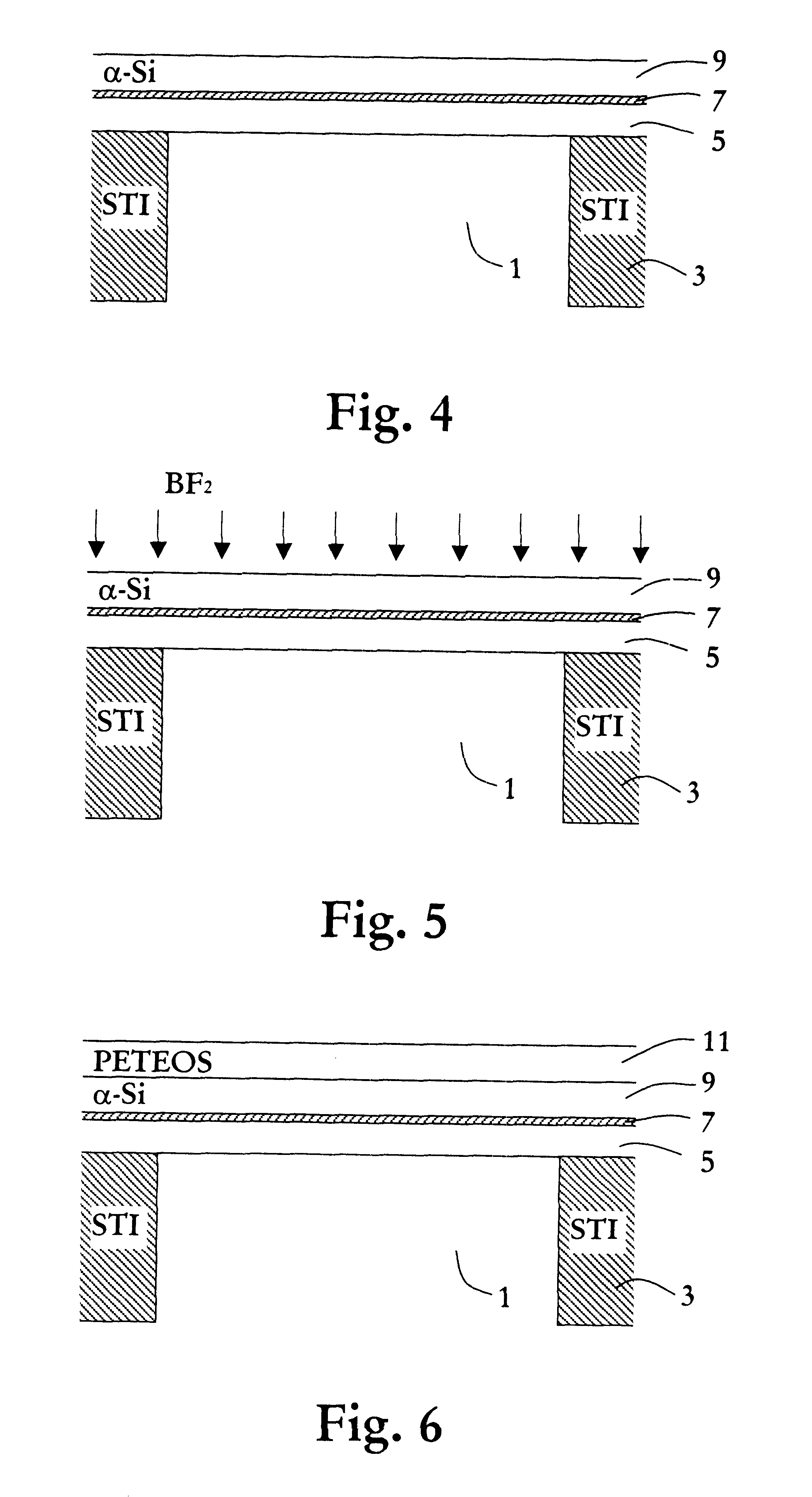Method in the fabrication of a silicon bipolar transistor
a technology of bipolar transistors and fabrication methods, applied in the direction of basic electric elements, electrical apparatus, semiconductor devices, etc., can solve the problems of unlinking the intrinsic base, high base resistance, and requiring an additional mask layer
- Summary
- Abstract
- Description
- Claims
- Application Information
AI Technical Summary
Benefits of technology
Problems solved by technology
Method used
Image
Examples
Embodiment Construction
In the following description, for purposes of explanation and not limitation, specific details are set forth, such as particular techniques and applications in order to provide a thorough understanding of the present invention. However, it will be apparent to one skilled in the art that the present invention may be practiced in other embodiments that depart from these specific details. In other instances, detailed descriptions of well-known methods and apparatuses are omitted so as not to obscure the description of the present invention with unnecessary details.
In this section, the process sequence, which includes formation of epitaxial base, extrinsic base and emitter window is described.
1. FIG. 1 shows a silicon substrate 1, which preferably is monocrystalline. The substrate can be homogeneous, but usually has different defined regions. In FIG. 1, the active area is depicted by (a), and isolation regions by (b). The substrate of the active area will form the collector of the devic...
PUM
| Property | Measurement | Unit |
|---|---|---|
| thickness | aaaaa | aaaaa |
| thickness | aaaaa | aaaaa |
| thickness | aaaaa | aaaaa |
Abstract
Description
Claims
Application Information
 Login to View More
Login to View More - R&D
- Intellectual Property
- Life Sciences
- Materials
- Tech Scout
- Unparalleled Data Quality
- Higher Quality Content
- 60% Fewer Hallucinations
Browse by: Latest US Patents, China's latest patents, Technical Efficacy Thesaurus, Application Domain, Technology Topic, Popular Technical Reports.
© 2025 PatSnap. All rights reserved.Legal|Privacy policy|Modern Slavery Act Transparency Statement|Sitemap|About US| Contact US: help@patsnap.com



